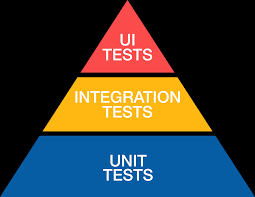Test automation is a critical part of modern software development practices. It allows software teams to deliver high-quality products faster and with greater confidence. One key concept in test automation is the test automation pyramid, which is a model that describes how to structure your automated tests to achieve the best results. In this article, we will explore the test automation pyramid, what it is, and how to use it effectively.
Table of Contents
What is the Test Automation Pyramid?
The test automation pyramid is a model that illustrates how to structure automated tests to achieve the best results. It consists of three layers: unit tests, integration tests, and end-to-end tests. Each layer serves a different purpose and provides a different level of confidence in the quality of the software being tested. The pyramid shape represents the relative proportion of tests at each layer, with the majority of tests being unit tests and the fewest being end-to-end tests.
The Three Layers of the Test Automation Pyramid
1. Unit Tests
Unit tests are the foundation of the test automation pyramid. They are the most granular level of automated testing and focus on testing individual units of code in isolation from the rest of the system. Unit tests are typically written by developers as part of the development process and are executed frequently during the build process. They are fast, reliable, and provide instant feedback on the quality of the code being developed.
2. Integration Tests
Integration tests sit in the middle of the test automation pyramid. They focus on testing how different units of code interact with each other and how they function as a whole. Integration tests ensure that the components of the system work together correctly and that the system can handle the expected load and traffic.
3. End-to-End Tests
End-to-end tests sit at the top of the test automation pyramid. They focus on testing the system as a whole and verifying that it meets the requirements and specifications. End-to-end tests simulate user interactions with the system and test the system’s behavior under different conditions, such as high traffic or unexpected input.
How to Implement the Test Automation Pyramid Effectively
To implement the test automation pyramid effectively, software development teams should follow these best practices:
Start with Unit Tests: As the foundation of the pyramid, it is essential to start with writing unit tests. Developers should write unit tests as part of their development process and run them frequently during the build process. This ensures that the code is of high quality and that any issues are caught early.
- Use Test-Driven Development (TDD): Test-driven development is a development approach that involves writing automated tests before writing any production code. This approach helps ensure that code is testable, maintainable and meets the requirements. If you talk about BDD vs TDD testing, both are methodologies that incorporate automated testing frameworks into their testing strategies.
- Prioritize Integration Tests: Integration tests are critical in ensuring that different components of the system work together. Prioritize writing integration tests that test critical paths and high-risk areas of the system.
- Automate End-to-End Tests: Although end-to-end tests are time-consuming and resource-intensive, they are critical in ensuring that the system meets the requirements. Automate end-to-end tests to reduce the time and effort required to execute them.
- Use the Right Tools: Choose the right test automation tools for each layer of the pyramid. There are many testing frameworks and tools available that can help automate testing at each layer of the pyramid.
- Maintain a Balance: Maintaining a balance between the number of tests at each layer of the pyramid is essential. Avoid having too many end-to-end tests or too few unit tests, as this can result in longer test execution times, reduced feedback, and a higher chance of missing defects.
Summing Up
In conclusion, the test automation pyramid is a useful model for structuring automated tests in software development. It provides a foundation for effective testing and helps ensure that software is of high quality, meets the requirements, and is delivered faster. By following the best practices outlined above, software development teams can implement the test automation pyramid effectively and achieve the full benefits of automated testing.








